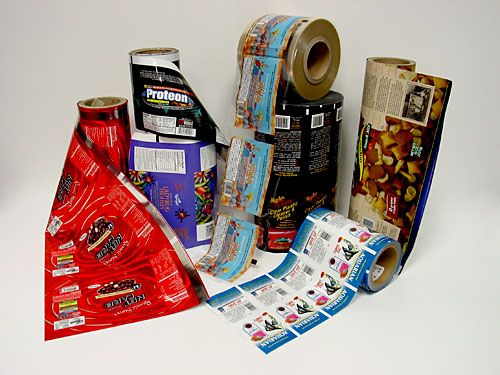Source: Link Testing Instruments Co.,Ltd.
The composite film material is to compound the single layer film of different materials together by adhesive, in order to give full play to the excellent performance of each single layer film and meet the quality requirements of the packaged product. Taking the aluminum-plastic composite film PET/Al/PE material as an example, the three single-layer film materials play different roles in the composite film, PET film acts as a printing layer, Al mainly acts as a barrier, PE film is a heat sealing layer, because Al surface is easy to produce creases, pinholes and other defects, PET, PE film will also play a protective role on the Al layer. If the composite fastness between the layers is low and easy to layer, it will weaken the protective effect of the plastic film layer on the aluminum foil layer. When it is squeezed and kneaded, the aluminum foil is easy to be destroyed, affecting the overall barrier performance of the composite film material. In addition, the low composite fastness will also affect the overall mechanical properties of the packaging such as impact resistance and puncture resistance.

Therefore, suitable composite fastness is a prerequisite to ensure that the properties of composite membrane materials can reach the expected value. There are many factors affecting the fastness of the composite film material, such as the type of adhesive, the ratio of each group, the amount of glue, the parameters of the composite process, and the ink.
Test Instrument & Standard
The composite fastness of the test basis and test instrument is generally characterized by the peel strength. In this paper, the peel strength of the sample was tested according to GB 8808-1988 "Peel Test Method for Soft Composite Plastic Materials". In this experiment, the XLW-500N intelligent automatic tensile tester developed and produced by Link Testing Instruments Co.,Ltd.
Test principle: This test analyzed the influence of different inks on the composite fastness of the sample by testing and comparing the peel strength of different color printing areas on the surface of the sample. During the test, the upper and lower fixtures of the equipment respectively clamp the two ends of the specimen peeling part, and the upper fixture moves upward to pull the specimen for peeling. The force value and displacement changes generated during the peeling process are monitored in real time by the force value sensor and displacement sensor configured on the upper fixture, so as to obtain the peeling strength of the specimen.
Test sample and test process
Test sample:In this experiment, a plastic composite film composed of two layers of film was selected as the test sample, and the surface of the sample contained three different colors of ink printing areas.
Test process:
(1) Cutting sample: 5 samples with a width of 15.0mm and a length of at least 10cm are cut from different colors on the surface of the sample in the same direction.
(2) State adjustment: the cut sample is placed at 23±2℃, 45%~55% of the environment in state adjustment for 4 h.
(3) Pre-peeling: Manually pre-peeling about 3 cm from one end of each sample.
(4) Set parameters: in the control software of the test equipment, equipment test speed (300 mm/min), sample width, sample name and other parameter information.
(5) Clamping sample: Take one of the samples, clamp the two layers of materials stripped by the pre-peeled part in the upper and lower fixtures of the equipment, so that the longitudinal axis of the stripped part coincides with the center line of the two fixtures, click the test option, the upper fixture moves upward according to the set speed, and the sample is peeled off.
Test results and analysis
The average value of the test results of 5 samples in each region was taken for the peel strength of the samples measured in this experiment in different color regions. Among them, the peel strength of the unprinted region, i.e. the transparent region, was 1.036N /15mm, and that of the white printed region was 0.887N /15mm. The peel strength of the yellow printed area is 0.571 N/15mm
Factors such as printing process, ink quality and compatibility with adhesives will affect the composite fastness in the printing area of composite film materials. This test tested the peel strength of plastic composite film samples in different color areas. The test operation was simple, the intelligence of the equipment was high, and the force value in the test process could be clearly and visually displayed. The test results show that the composite fastness of the unprinted area is the best, followed by the white printing area and the yellow printing area. This phenomenon may be related to the different compatibility of different colors of inks and adhesives.
For more details please visit www.linktesting.org